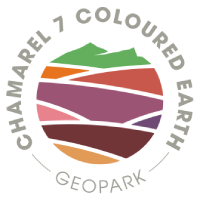Attention was first drawn to the existence of coloured earth in Chamarel by a member of the Royal Society of Arts and Sciences of Mauritius at its 26 November 1879 session. This historical village in the southwestern uplands of Mauritius is named after Toussaint and Charles de Chazal de Chamarel – the sons of François de Chazal de la Genesté, once a member of the Superior Council of the island –, who were granted a 625-arpent concession in the region in 1786.
A curious and unusual phenomenon, the Seven Coloured Earth site became a major attraction from the early days of tourism on the island in the 1960s. The dunes can reach up to 15 metres thick and contain traces of ancient geoclimatic activity.
Mauritius is part of the fascinating story of continental drifts and collisions, volcanic eruptions and other breathtaking events that led to the formation of tropical reefs and oceans, lagoons, mountain ranges and basalt cliffs. Weathered by hot and humid conditions, basalt formed from outpourings of lava that occurred during the intermediate period from 3 to 1.7 million years ago turned into gullied clay.
This profound and ultimate decomposition has left on-site iron and aluminium oxides. The ferric oxide has coloured the sands with shades ranging from red to brown while the aluminium oxide has produced shades ranging from blue to violet-blue.
The consistent separation of the different strips of coloured sand may be explained by the fact that iron and aluminium particles have a natural repelling effect on one another. The swirling patterns of the dunes have been carved out by rain over thousands of years.
Rooted in the history of Chamarel, the Seven Coloured Earth Geopark is a culturally relevant experience that provides visitors with an extraordinary glimpse into millions of years of natural history, geology and evolution.


